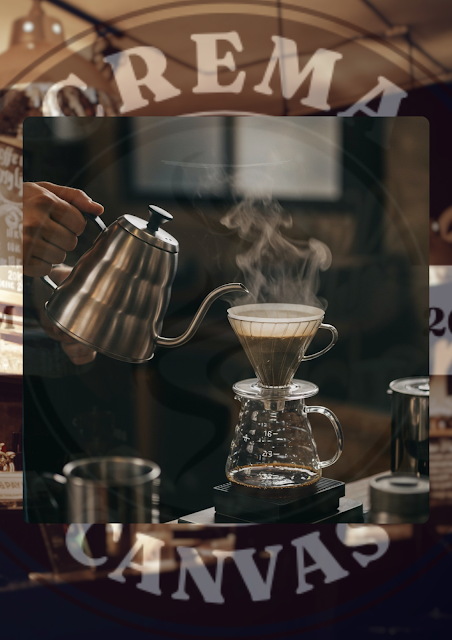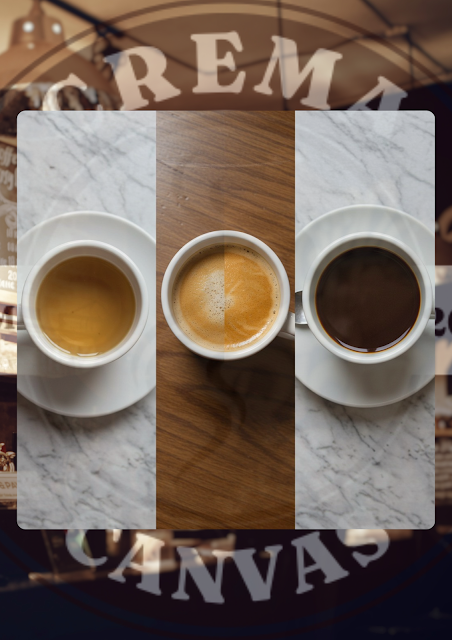The Extraction Catalyst: Why Mastering Pour-Over Water Temperature is Your Ultimate Flavor Upgrade
You’ve dedicated time to perfecting your bean selection, honing your grind consistency, and mastering the precise geometry of your pour-over technique. Yet, does your coffee still occasionally taste flat, or perhaps surprisingly harsh? The secret to unlocking the full, vibrant potential of your specialty brew lies not in the bean, but in a factor many overlook: Pour Over Water Temperature.
Getting this variable right is not a minor detail; it is the catalyst of extraction, transforming your daily cup from ordinary to an extraordinary, professionally balanced experience.
I. The Chemistry of Flavor: Why Temperature is the Absolute King
Think of the brewing process as an intricate chemical reaction. Hot water is the solvent that aggressively extracts desirable compounds—acids, sugars, oils, and melanoidins—from your coffee grounds. Temperature directly dictates the speed and efficiency of this process, known as coffee extraction.
The Two Flavor Fails: Under- and Over-Extraction
If the water temperature deviates even slightly from the optimal range, the delicate balance of compounds is destroyed:
| Temperature Deviation | Resulting Flavor Profile | The Scientific Mechanism |
|---|---|---|
| Too Cold (Below $195^\circ\text{F}$) | Under-Extracted Coffee: Tastes sour, weak, salty, and disappointingly one-dimensional. | The water lacks the necessary thermal energy to dissolve complex sugars and oils, leaving beneficial acids underdeveloped and unbalanced. |
| Too Hot (Above $205^\circ\text{F}$) | Over-Extracted Coffee: Tastes harsh, bitter, astringent (dry, puckering mouthfeel), and burnt. | Excess heat accelerates the extraction of undesirable compounds like tannins and bitter plant fibers, overpowering the delicate sweetness and acidity. |
The ultimate goal is to hit the optimal brewing temperature, the "Goldilocks Zone," where extraction is balanced and complete, allowing the full spectrum of the coffee’s inherent sweetness, acidity, and body to shine through in perfect harmony.
II. The Magic Number: The Optimal Thermal Range
Based on extensive research by the Specialty Coffee Association (SCA) and professional baristas globally, the definitive sweet spot for pour over water temperature falls within a tight range: $195^\circ\text{F}$ to $205^\circ\text{F}$ ($90^\circ\text{C}$ to $96^\circ\text{C}$).
This range ensures the water is hot enough to efficiently pull out essential flavor compounds, yet cool enough to leave behind the harsh, bitter elements.
Advanced Temperature Profiling: Adjusting for Roast Level
The specific temperature you choose within this range is the final, most sophisticated lever you have to "dial in" your brew, often determined by the roast level:
| Roast Level | Recommended Temperature Range | Rationale |
|---|---|---|
| Light Roasts | $203^\circ\text{F}$ to $205^\circ\text{F}$ ($95^\circ\text{C}$ to $96^\circ\text{C}$) | Light roasts are denser and less soluble. Hotter water provides the aggressive solvent action required to fully extract their complex acids and subtle floral/fruity notes. |
| Medium Roasts | $198^\circ\text{F}$ to $202^\circ\text{F}$ ($92^\circ\text{C}$ to $94^\circ\text{C}$) | A neutral temperature to preserve their balanced flavor, minimizing the risk of over-extracting the already-developed sugars. |
| Dark Roasts | $195^\circ\text{F}$ to $198^\circ\text{F}$ ($90^\circ\text{C}$ to $92^\circ\text{C}$) | Dark roasts are more porous and highly soluble. Cooler water is essential to slow the extraction rate and prevent the immediate release of bitter, charred, or ashy flavors. |
III. Precision Equipment: Controlling Heat Loss Dynamics
The true challenge in pour-over is not just hitting the ideal temperature but maintaining it as the water leaves the kettle and hits the coffee bed. Uncontrolled heat loss is the enemy of consistency.
1. The Variable Temperature Gooseneck Kettle
For serious pour-over enthusiasts, a gooseneck kettle with temperature control is a mandatory investment. This tool eliminates guesswork, allowing you to:
- Set and Hold: Heat water to a precise degree (e.g., $203^\circ\text{F}$) and hold it there, ensuring every pour is consistent.
- Controlled Pour: The long, narrow spout provides the necessary precision for a slow, gentle pour, minimizing agitation and heat loss at the point of contact.
2. The Critical Importance of Preheating
Heat loss is inevitable when hot water hits a cold surface. Preheating is a non-negotiable step that stabilizes the thermal environment:
- Dripper and Carafe: Thoroughly rinse your brewing device (V60, Chemex, Kalita Wave) and your serving vessel with hot water before you begin the brew. This raises the temperature of the brewing apparatus, preventing it from acting as a heat sink and quickly robbing the slurry of crucial thermal energy. Discard this rinse water completely.
3. The Boiling Point Approximation (Non-Thermometer Method)
If a thermometer is unavailable, a reasonable approximation relies on controlled cooling:
Rule of Thumb: Bring your filtered water to a full boil ($212^\circ\text{F}$ or $100^\circ\text{C}$), remove it from the heat source, and let it sit undisturbed for 30 to 60 seconds before beginning the bloom pour. This resting period typically allows the temperature to drop into the desirable $195^\circ\text{F}$ to $205^\circ\text{F}$ range.
IV. Pro Tips for Sustained Thermal Consistency
Maintaining the thermal integrity of the slurry throughout the entire $3.5$ minute pour-over process requires disciplined technique:
- Heat Extra Water: Always boil more water than you need (e.g., heat $500\text{g}$ for a $300\text{g}$ brew). A higher volume of water in the kettle has greater thermal mass and will cool down less dramatically between pours.
- The Contact Point: Focus your pour onto the coffee bed, not the sides of the filter paper or the dripper walls. Pouring on the filter material allows water to bypass the coffee, cool quickly, and contribute to under-extraction (known as bypass water).
- Minimize Delays: Once the brewing process starts (the bloom), minimize interruptions. Delays allow the brewing slurry to cool and the extraction to slow, leading to an unbalanced, two-toned flavor profile (sour, followed by bitter).
V. Diagnosis by Taste: The Final Thermometer
Ultimately, the best indicator of correct water temperature is the flavor in your cup. Use your palate as the final, most sensitive thermometer:
| Sensory Flaw | Temperature Diagnosis | Grind Diagnosis |
|---|---|---|
| Sour, Tart, Flat | Water Temperature Too Low. | Grind Too Coarse. |
| Bitter, Dry, Harsh | Water Temperature Too High. | Grind Too Fine. |
By approaching the pour over water temperature with precision and a scientific understanding of extraction chemistry, you gain the mastery to transform your beans from just "good" to truly exceptional. This attention to thermal detail is the final frontier in pour-over excellence.
Now it's your turn! What temperature do you find ideal for your favorite roast, and how has precise temperature control changed your coffee ritual? Share your advanced tips and experiences in the comments below!





.png)
.png)
.png)
.png)

.png)
No comments:
Post a Comment